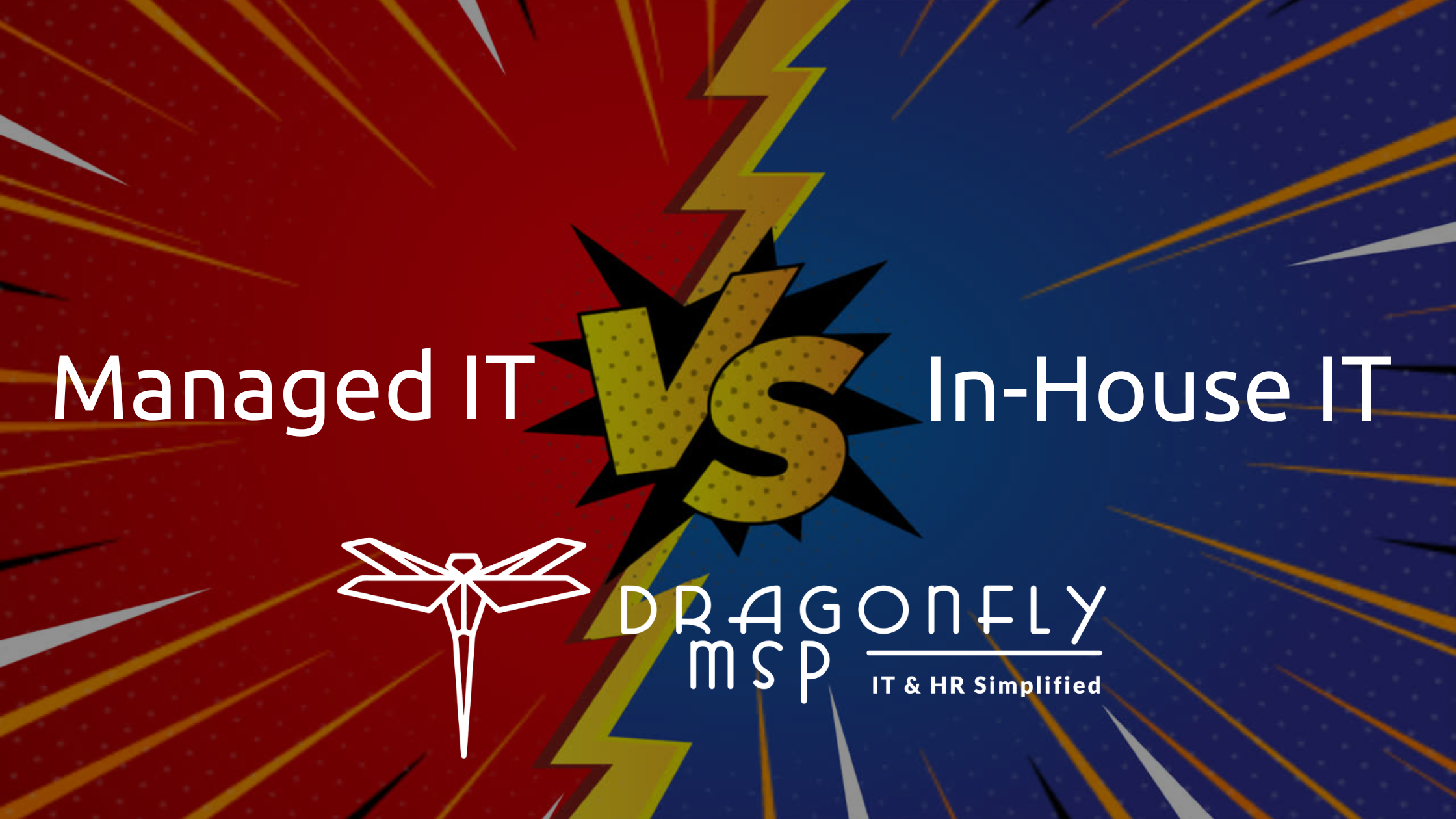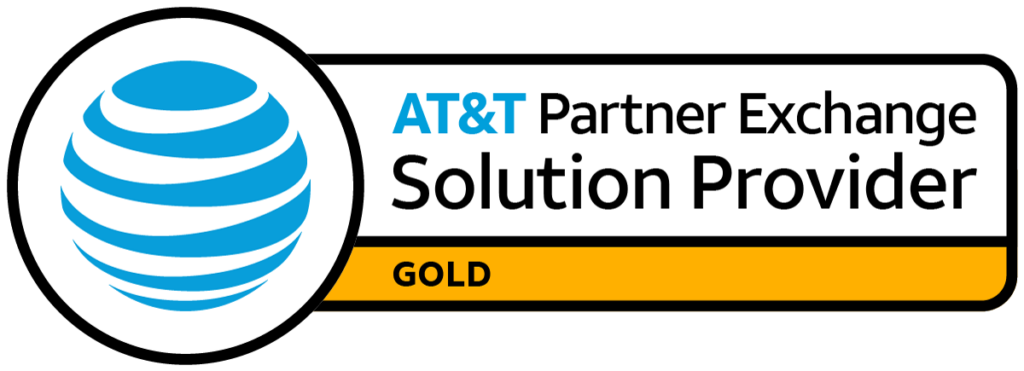Introduction
When it comes to handling technology for your business, you generally have two paths: build an in-house IT team or hire a Managed IT Service. Both paths can lead to success, but each has unique benefits and challenges. How do you decide which option is best for you?
In this blog, we will compare Managed IT and In-House IT in key areas like cost, expertise, flexibility, and control. We’ll keep the language simple and straightforward, so you can make an informed choice without getting lost in tech jargon. By the end, you’ll see that each option has strong points—and the right decision often depends on your business’s size, budget, and goals.
1. Cost Comparison
Money matters a lot in any decision, and IT is no exception. Let’s look at the costs.
In-House IT
- Salaries and Benefits: You’ll pay full-time wages, plus benefits like health insurance, vacation, and training.
- Equipment: You must provide office space, computers, and other tools for your IT team.
- Unexpected Costs: If a server breaks or software needs an upgrade, you shoulder those expenses directly.
Managed IT
- Fixed Monthly Fee: Usually, you pay a set amount each month for a range of services.
- No Extra Staffing Costs: You don’t pay for employees’ benefits, which can save money.
- Scalability: You can often scale up or down as needed, with clear pricing.
Who Wins?
If you need predictable expenses, Managed IT might be the winner. In-house can be more expensive, especially for small businesses, but it gives you direct control over staff and spending.
2. Level of Expertise
Who has the knowledge you need?
In-House IT
- Deep Understanding of Your Company: Since they work for you alone, they know your systems inside and out.
- Limited Exposure: They handle mostly your internal issues. They might not see a wide variety of problems from different industries.
Managed IT
- Varied Experience: Providers work with many businesses, so they encounter all kinds of tech issues.
- Ongoing Training: They often invest in the latest certifications and follow industry trends closely.
Who Wins?
If you want a broad range of expertise and up-to-date skills, Managed IT has an edge. If you need someone with an intimate knowledge of your unique processes, In-House might feel more comfortable.
3. Availability and Support
When something breaks, how quickly do you get help?
In-House IT
- Immediate, On-Site Support: Your team is right there. They can fix a printer jam in minutes.
- Work Hours: They might work 9–5, unless you pay for extra after-hours coverage.
Managed IT
- 24/7 Monitoring: Many providers offer round-the-clock services and can fix issues remotely.
- Possible On-Site Delays: If you need a physical repair, it might take time for a technician to arrive.
Who Wins?
If you need hands-on support right away and can afford extra pay for off-hours, In-House might be better. If you want 24/7 coverage without hiring multiple shifts, Managed IT can do that.
4. Flexibility and Scalability
How easily can you adapt your IT as your business changes?
In-House IT
- Hiring Takes Time: Adding new employees can be slow and pricey.
- Equipment Upgrades: Expanding means buying more servers and hardware.
Managed IT
- Instant Adjustments: Need more storage or a bigger plan? A phone call can often solve it.
- No Hardware Hassles: Many providers use cloud services, which makes scaling easier.
Who Wins?
For quickly scaling up or down, Managed IT is often the clear winner. In-house teams can be powerful but may take longer to adjust due to hiring and procurement processes.
5. Security and Compliance
Keeping data safe is a top concern.
In-House IT
- Control Over Tools: You pick the security software and methods, so you know exactly what’s in place.
- Risk of Limited Expertise: If your team isn’t specialized in cybersecurity, you might miss important steps.
Managed IT
- Specialized Security Knowledge: Providers often have security experts on staff.
- Regular Updates: They keep your systems patched and monitored around the clock, if that’s in your contract.
Who Wins?
If you have a highly skilled security team in-house, you can maintain strong control. Otherwise, Managed IT is likely more prepared to deal with emerging threats and compliance requirements.
6. Focus on Core Business
How do IT choices impact your overall focus?
In-House IT
- Close Alignment with Goals: An in-house team understands your business at a deep level.
- Time Consumption: Management might spend time supervising the IT staff and dealing with issues.
Managed IT
- Less Time Managing Tech: They handle IT details, freeing you to focus on other parts of the business.
- Alignment Requires Communication: They need regular updates to understand your evolving needs.
Who Wins?
If you prefer day-to-day involvement in tech decisions, In-House might suit you. If you’d rather let experts handle it so you can focus on strategy, Managed IT might be better.
7. Control and Customization
Do you want to shape every aspect of your IT?
In-House IT
- Complete Control: You can set all policies and choose every tool.
- Potential for Over-Control: Sometimes non-IT leaders might micromanage, leading to less efficient processes.
Managed IT
- Shared Decisions: The provider often suggests solutions based on best practices, but you still have a say.
- Limited Custom Options: Some providers have standard packages that may not fit every unique need.
Who Wins?
If you need to customize everything and want total control, you might lean towards In-House. But if you’re open to proven, pre-set solutions, Managed IT can offer well-tested setups.
8. Innovation and Upgrades
Which option helps you stay on the cutting edge?
In-House IT
- Dependent on Internal Initiative: Your team must stay updated through training and research.
- Budget Constraints: Upgrading systems can be pricey, so you might delay improvements.
Managed IT
- Constant Learning: Providers serve multiple clients, so they learn new solutions quickly.
- Spread Costs: They often share the cost of tools across many clients, making upgrades more affordable.
Who Wins?
If your business invests heavily in R&D and you have a top-notch IT team, In-House can be innovative. If not, Managed IT often brings the latest tools and approaches at a lower shared cost.
9. Training and Development
Keeping your IT staff skilled is crucial.
In-House IT
- Employee Growth: You can invest in training your staff, building loyalty and expertise over time.
- Expense and Time: Paying for certifications and classes adds up, and your staff might be away from projects while training.
Managed IT
- Built-In Training: The provider handles their own staff’s development.
- Immediate Expertise: They can quickly assign a certified expert to your project without downtime.
Who Wins?
If you like building your own team’s skills and can afford it, In-House might work well. For immediate or specialized knowledge, Managed IT is handy since they already have trained staff.
10. Reliability and Redundancy
What if your main IT person is sick or on vacation?
In-House IT
- Limited Redundancy: If a key IT person leaves, you might struggle until you replace them.
- Single-Point Failure: One person might hold a lot of system knowledge.
Managed IT
- Team Approach: If one tech is away, another can step in.
- Less Risk: Knowledge is spread across the provider’s entire staff.
Who Wins?
For consistent coverage regardless of employee turnover, Managed IT offers more reliability. In-house can leave you vulnerable if your top person departs suddenly.
11. Response Times
When emergencies happen, speed matters.
In-House IT
- Instant Physical Presence: If they’re on-site, they can walk over and fix something.
- After-Hours Delays: If issues occur at night, you might have to call them in, causing delays.
Managed IT
- 24/7 Hotlines: Many providers offer round-the-clock support.
- Remote Fixes: They can solve many issues without coming on-site.
Who Wins?
If immediate in-person help is crucial and you have staff for after-hours, In-House might be faster. If remote fixes and 24/7 phone support suffice, Managed IT is strong.
12. Cultural Fit
Culture might not seem like a tech issue, but it can matter.
In-House IT
- Embedded Team: They share your company culture and values.
- Team Bonding: They know your office routines and can build strong relationships internally.
Managed IT
- External Partner: They’re not always in the office, so some employees might feel they’re outsiders.
- Need for Communication: Clear, ongoing communication is required so they understand your culture.
Who Wins?
If you value having IT fully integrated into your company vibe, In-House can be good. If you’re okay with an external partner who visits occasionally, Managed IT can still fit well if communication is strong.
13. Technology Breadth
Some businesses use a broad mix of tools.
In-House IT
- Focused Tools: Your team knows your chosen software and hardware in depth.
- Harder to Expand: Learning new tools may require training and time.
Managed IT
- Wider Exposure: They see lots of tools from different clients.
- Faster Adoptions: They can suggest or deploy fresh solutions quickly.
Who Wins?
If you only use a few tools and have them mastered, In-House might be enough. If you’re open to trying new tech or have varied needs, Managed IT might provide more options.
14. Industry-Specific Needs
Some industries have strict regulations or special software.
In-House IT
- Industry Focus: A team hired with specific industry experience can be laser-focused.
- May Lack External Perspective: They might not see how other industries solve similar problems.
Managed IT
- Specialized Teams: Some providers specialize in healthcare, finance, or legal tech.
- Compliance Expertise: They can guide you on meeting data rules and laws.
Who Wins?
If you find a Managed IT provider with deep experience in your field, that can be excellent. But if your industry is very niche, building an In-House team might be more targeted.
15. Handling Software Licensing
Software licenses can be confusing.
In-House IT
- Manual Tracking: Your team must track each license’s renewal date and make sure you stay compliant.
- Potential Oversight: Missed renewals can result in penalties or software downtime.
Managed IT
- Automated Systems: Many providers track licenses for you and handle renewals.
- Bulk Discounts: They might have deals with vendors that lower costs.
Who Wins?
Managed IT often simplifies licensing. In-house can manage it fine but might need extra tools and processes to avoid missed renewals.
16. Communication Channels
How will you talk to your IT team?
In-House IT
- Face-to-Face Meetings: Quick and easy, just walk over to their desk.
- Instant Communication: You see each other daily, which can reduce confusion.
Managed IT
- Phone, Email, Chat: They might have ticketing systems for support.
- Scheduled Visits: If you need on-site help, you might have to plan it.
Who Wins?
If frequent in-person collaboration is critical, In-House is straightforward. If virtual communication works for you, Managed IT is equally effective.
17. Future Growth Considerations
Which option sets you up for success in the long run?
In-House IT
- Stable Team Building: You develop employees who grow with your company.
- Risk of Falling Behind: If technology changes quickly, you might struggle to keep up without more staff or training.
Managed IT
- Constant Updates: They adapt to new trends and can quickly shift your systems.
- Flexible Contracts: You can adjust services as your company changes direction.
Who Wins?
If you want a stable, internally grown team over many years, In-House might be appealing. But for rapid tech evolution, Managed IT can pivot faster.
18. Risk Management
Mistakes happen. How are they handled?
In-House IT
- Single Accountability: If an employee makes a mistake, your company bears the cost.
- Fewer Backups: If your team overlooks something, you can’t easily tap outside expertise.
Managed IT
- Shared Responsibility: The provider might have service-level agreements that define liability.
- Expert Backup: If one technician is unsure, they can consult others in the firm.
Who Wins?
For spreading out risk and having multiple experts double-check work, Managed IT is beneficial. In-house means you hold all the risk—but also all the control over the outcome.
19. Speed of Implementation
Getting new systems up and running can take time.
In-House IT
- Potential Delays: Hiring new staff or learning new tools can slow projects.
- One Dedicated Team: Once everyone is on board, they work just for you.
Managed IT
- Rapid Deployment: They often have templates or proven steps for quick set-up.
- Managing Multiple Clients: You might have to wait if your provider is juggling other projects.
Who Wins?
If you have a well-staffed in-house team, they can focus solely on your needs. But Managed IT often uses best practices to implement solutions quickly.
20. Making the Final Choice
No one answer works for everyone. For some, building a full-time IT department is the best route, especially if they need tight control and have the budget for salaries, training, and equipment. For others, especially smaller businesses or those wanting predictable costs, Managed IT offers a balanced blend of expertise, flexibility, and cost-effectiveness.
What should you do next?
- Assess Your Goals: Are you planning rapid growth? Do you need advanced security?
- Evaluate Your Budget: How much can you spend on salaries versus monthly service fees?
- Consider Your Culture: Do you want IT deeply woven into your company, or are you comfortable partnering externally?
- Compare Providers: Even if you lean towards Managed IT, shop around. If you prefer in-house, weigh the hiring and training costs.
You may even consider a hybrid approach, where you keep one or two IT pros on staff for day-to-day tasks but also partner with a Managed IT service for specialized projects or 24/7 monitoring. This gives you the best of both worlds: personal attention plus broader expertise.
Conclusion
Whether you choose In-House IT or Managed IT depends on your unique situation. In-house teams give you full control, deep company knowledge, and direct oversight. Managed IT brings diverse expertise, often lower costs, and 24/7 coverage.
Review your short-term and long-term goals, your budget, and your preference for control. Think about your company size and the complexity of your tech needs. For some, building a strong internal IT department is a great investment. For others, partnering with a Managed IT provider frees them to focus on what they do best—serving customers and growing the business.
The good news is, whichever path you choose, there are ways to ensure success. With careful planning, clear communication, and a focus on security and efficiency, your IT can become a powerful tool that drives your business forward. Good luck on your journey to finding the perfect IT solution!
#ManagedIT #InHouseIT #TechSupport #BusinessTech #CompareOptions #ITDecisions #Security #Scalability







